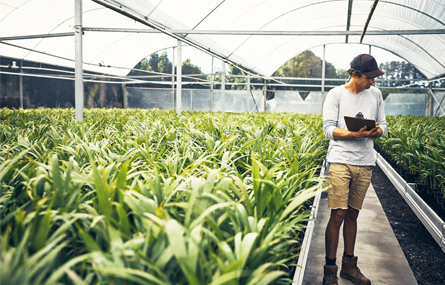About a decade ago, we started hearing rumblings in the horticultural industry about the value of lean production. While ornamental growers aren’t strangers to running lean, the talk focused on a newer take: Lean as a mindset and a system of principles and practices that ultimately bring value to your customers and greater profits to you.
Though you often see it capitalized as LEAN, it technically isn’t an acronym. (Though we think Labor, Efficiency, and Automation in Nurseries works pretty well.) Instead, lean describes an approach that minimizes waste—in labor, movement, product inputs; you name it—to maximize value, efficiency, and profitability.
With labor scarcity, supply chain challenges, and price pressures increasing, talk about going lean and growing lean has increased, too. And, if you’re like us, whatever realm of the ornamental business you occupy, achieving more with fewer resources and less waste sounds good.
Lean evolution
Some lean proponents argue that lean production concepts got their start in the United States when Henry Ford revolutionized the burgeoning auto industry with his moving assembly line. But the system of lean manufacturing behind today’s talk and practices typically is credited to Toyota, where post-WWII executives built on Ford’s innovations to optimize manufacturing flow. By the 1990s, thanks to several books, descriptions of Toyota’s “lean” production system stuck.
Now, you may not think of your greenhouse or nursery as a plant factory. But there’s no denying the rote tasks that a growing operation entails. From planting and transplanting, to placing and spacing, to pulling and loading, you’ve probably thought more than once that there’s got to be an easier, better way. (If not, ask a few team members on your docks.)
Horticulture industry leaders have a history of adding innovation to a good concept to make it our own. And one of the best aspects of lean is its continued evolution as horticulture puts lean principles to work to move the industry forward.
Lean thinking
Customer value is at the heart of thinking lean, whether you’re looking at steps in your production processes or administrative work. When you identify what adds value for the customer—value they’ll pay for—you often find that some costly steps don’t add value at all.
Eliminating unnecessary or non-value-added inputs—whether “plant touches” like moving and spacing, nutrient waste from inefficient feedings, or those extra steps your sales staff has to take—epitomizes lean thinking and lean practices. Minimize waste, maximize value. And your balance sheet shows the impact.
Ask around the horticulture industry, and you’ll find plenty of growers using lean production practices—though they may or may not call them “lean.” Some industry experts suggest that automation, one way to unlock lean potential, can deliver up to 70% labor savings through the gains in efficiencies that it brings.
But automation for automation’s sake isn’t necessarily lean. Monrovia Nursery CEO Jonathan Pedersen’s Saturday morning automation talk was one of Cultivate’22’s most popular sessions. As Pedersen pointed out, it’s important to ask, “Will it be worth it?” Unless the gains from automation are worth the investment—adding value to the end result—you’re moving away from lean instead of toward it.
Lean gains
With labor shortages still weighing heavy, gains that allow your people to do more—more efficiently and effectively—matter like never before. Lean nursery or greenhouse production goes beyond technology, but technological advances are crucial to moving forward.
 As we talked about in a recent post on our website, technology is transforming the horticulture industry. Through carefully considered refinements in your processes and practices, lean growing can improve crop quality and consistency, and free up staff for bigger and better things.
As we talked about in a recent post on our website, technology is transforming the horticulture industry. Through carefully considered refinements in your processes and practices, lean growing can improve crop quality and consistency, and free up staff for bigger and better things.
One publication recently shared how automated pruning machines increased productivity 100% at one nursery, saving time and labor while improving quality over manual pruning. Another nursery cut its order lead time in half by reducing the number of steps it took to get plants from fields to trucks. A third reduced planting labor by 45%—simply by redesigning the space and relocating components for the planting staff. Maybe your operation enjoys similar gains.
So, call it “lean” or just call it your brand of industry savvy. The time is ripe for introspection and innovation as ornamental horticulture moves into its next phase. So, give us a call. We’re here for you every step of the way, creating impact for a sustainable future. Helping you succeed drives us to innovate every day.
